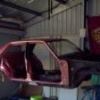
Why do ignition setups struggle with low RPM?
#1

Posted 28 December 2009 - 02:02 PM
I've dealt with a few cars recently that missfire and shit really badly at low RPM with the throttle open (yes I know they shouldn't be like that lol) but the moment you wind the motors out a bit they run beautifully.
So why, in practice, are ignition systems so important in low and mid range performance?
#2
 _Bomber Watson_
_Bomber Watson_
Posted 28 December 2009 - 02:45 PM
sorry couldnet help myself.
Cheers.
#3

Posted 28 December 2009 - 02:48 PM
Edited by Heath, 28 December 2009 - 02:48 PM.
#4
 _Bomber Watson_
_Bomber Watson_
Posted 28 December 2009 - 02:53 PM
Look mate i've never really had that problem in a case where i can directly trace it back to the ignition system.
Possibly your miss is still there at the higher rpm just you cant notice it due to the more frequent combustion cycles?
Perhaps at low rpm the fluctuation of a worn/shithouse ignition system going up and down 2-3 degrees randomly has a more noticeable affect....
Cheers.
#5

Posted 28 December 2009 - 03:28 PM
Imho a miss is more likely at low-medium revs at WOT because the cylinder pressures are higher so there is higher resistance for the spark to jump.
#6

Posted 28 December 2009 - 03:48 PM
Interesting points, might be just that simple, was expecting other explanations/suggestions. Howard you mean higher cylinder pressures because the volumetric efficiency is better at low rpm
#7
 _Bomber Watson_
_Bomber Watson_
Posted 28 December 2009 - 04:08 PM
Howard you mean higher cylinder pressures because the volumetric efficiency is better at low rpm
I think he simply ment that at WOT the cylinder pressures are higher, could be wrong though....
Peak volumetric efficiency is achieved at the top of the torque curve, pending on the engine tune not necessarily at low rpm....
But yeah, covered the best i can come up with, hopefully someone smarter than me (calling everyone with a third grade or higher education!!) will be able to come up with something better, im all ears.
Cheers.
#8

Posted 28 December 2009 - 07:51 PM
What turned out to be wrong with these cars, was it actually faulty ignition systems?I've dealt with a few cars recently that missfire and shit really badly at low RPM with the throttle open
#9

Posted 28 December 2009 - 07:55 PM
The thing you rang me about yesterday?
#10
 _torbirdie_
_torbirdie_
Posted 29 December 2009 - 08:03 AM
At low medium revs a single miss is much more noticeable than at high rpm.
Imho a miss is more likely at low-medium revs at WOT because the cylinder pressures are higher so there is higher resistance for the spark to jump.
Agree that at WOT cylinder pressures are higher, and this makes it harder for a spark to be produced and any ignition weakness such as a lead, coil or plug could cause a missfire.
Not so sure about cylinder pressures being higher at low rpm on the compression stroke, why would that be?
If anything the cam on most engines allows better filling of the cylinder at higher rpm. Perhaps a miss at low rpm is going to be more noticeable in a stock motor than a high performance one.
#11

Posted 29 December 2009 - 10:27 AM
Yeah Rob my mate's F*** was missing badly at low rpm, but once again wind it out a bit and it runs smooth as.
DA I would say that the VE would be better down low in most situations, unless your cam has huge overlap and your inlet & exhaust runners are big.
Does a high cylinder pressure necessarily resist spark? Why's that?
#12
 _Bomber Watson_
_Bomber Watson_
Posted 29 December 2009 - 06:46 PM
As i hinted, where the highest cylinder pressures occur depends on your cam....Standard engine it would be in the Low RPM area.
Cheers.
#13
 _Gunmetal LH_
_Gunmetal LH_
Posted 01 January 2010 - 09:10 PM
I don't know why but it's more prevalent at the low revs.
Edited by Gunmetal LH, 01 January 2010 - 09:11 PM.
#14

Posted 02 January 2010 - 03:32 AM
Yeah Rob my mate's F*** was missing badly at low rpm, but once again wind it out a bit and it runs smooth as.
DA I would say that the...
DA what the?
#15

Posted 02 January 2010 - 08:25 AM
Yeah Rob my mate's F*** was missing badly at low rpm, but once again wind it out a bit and it runs smooth as.
DA I would say that the...
DA what the?
Is he back??
#16

Posted 02 January 2010 - 10:32 AM
Interesting post Gunmetal LH!
#17

Posted 02 January 2010 - 10:12 PM
Spark weakens with increased compression. (Dunno why? Google it?)
Early points ignition systems produced around 12,000 volts.
Electronic produces around 20,000 volts.
Think about it.
Electronic ignition came to the fore at the same time as pollution laws.
L.P.G needs a stronger spark for reasons only known to rocket scientists.
#18

Posted 03 January 2010 - 01:27 AM
Think about it.
Electronic ignition came to the fore at the same time as pollution laws.
Ok thinking out loud here,
Atoms of carbon exited by the heat of the compression stroke forming oxides.
#19
 _oldjohnno_
_oldjohnno_
Posted 03 January 2010 - 06:31 AM
At low speeds the cylinder filling velocity will be much lower, especially with an open throttle. On top of this there will be much less turbulence in the chamber around the time of ignition. So basically the mixture will be less homogenous and less thoroughly mixed, so there will be less chance of an ignitable chunk of the charge being in the vicinity of the plug at the right time. I think rodomo is on the money with the comment about the early pollution motors like the HX-HZ. These had weak mixtures and exhaust gas dilution, and they coughed and farted at low speeds even when they were in tune. The HEI ignitions helped a lot but they were never really smooth at low speeds until EFI came in and the low-speed mixture quality was better controlled. So basically at low speeds the less homogenous mixture is harder to light, and if you have bad leads or some other ignition weakness it's gonna show up here first. Especially with a carb.
That my theory anyway, even though I have no proof or evidence whatsoever
#20
 _cruiza_
_cruiza_
Posted 03 January 2010 - 07:44 AM
I had a miss in my V8 torana wasn't to bad at idle or fee reving the engine but try to drive it and it all but stalled until I got it up to 100km then it it fine, however when I checked two of the blades had broken off the breakerless ignition so the miss was actually there all the time I just not could hear it
#21

Posted 03 January 2010 - 10:55 AM
#22

Posted 03 January 2010 - 11:18 AM
cruiza don't get me wrong I definitely know what you mean, I've noticed that kind of thing occurring to an extent in other situations, but if you'd seen the behaviour of the cars I'm talking about you wouldn't have suggested that, the change is unbelievably radical, my poor online explanation probably isn't thorough enough to give you a good idea
Cheers
#23
 _cruiza_
_cruiza_
Posted 03 January 2010 - 11:38 AM
I think you guys may have covered it, they sound like very plausable scenarios to me
cruiza don't get me wrong I definitely know what you mean, I've noticed that kind of thing occurring to an extent in other situations, but if you'd seen the behaviour of the cars I'm talking about you wouldn't have suggested that, the change is unbelievably radical, my poor online explanation probably isn't thorough enough to give you a good idea
Cheers
Yeah no worries Heath, I am most definitely not an expert, I was mearly relating my own experience, my car had such a big CAM in it you could not tell a lumpy idle from running on 6 instead of 8 cyclinders until you put a load on it and tryed to drive it
cheers Cruiza
#24
 _NZ Toranaman_
_NZ Toranaman_
Posted 04 January 2010 - 08:00 AM
I went to the drags and couldn't work out why it felt like i was towing a trailer down the quarter and could only manage a 14.0 at 99mph. It was a low key street meet and i never took any tools
Next day I went out on the street dropped the revs in top gear to 1500rpm then gave it some gas and a very even miss on one cylinder, back to my garage and one plug had the porcelain cracked.
Now I couldn't notice this until I loaded it up at low revs and anyone with webers can tell you when you put your foot down the fuel squirt is considerable, and like I read previous a N/A car is struggling to get a nice flow through the engine at low speeds and if you have spark or synch issues it will show its ugly head then.
BTW I can now drop my 202 with big 38mm chokes to below 1500rpm in top gear now and no miss, 13.8 volt to HEI ignition and 1.3mm gap on the plugs.
Check out my latest Vid after I tuned a bit of streetness into it on the weekend, (I change the tune a bit and learn more and more)
http://www.youtube.c...h?v=p-dvmKNck1I
#25
 _Gunmetal LH_
_Gunmetal LH_
Posted 09 January 2010 - 08:40 PM
Volumetric efficiency is CRAP at low revs. You have that throttle butterfly 'choking' the intake path and the cylinder filling capability in next to nothing regardless of what intake or cam you've got.
A spark plug gap needs (if I remember correctly) around 10k volts to 'ionise' the gap before a spark will jump. Regardless of how many volts the ignition system is producing.
Ionising the a/f mix properly is when the fuel has dissipated well and not droplets of fuel. A good example is to grab turps in a spray bottle and light up a stream- it burns. Now light it up when it's on spray- THAT S#!T REALLY BURNS!
All 'factory' intake manifolds have coolant passing through them to warm the intake and help ionise the a/f mix at low revs to prevent a 'hole' on takeoff.
The a/f mix is not ionised very well at all near idle so the ignition system needs to work really hard to ionise the gap as the a/f mix isn't helping. At idle the power produced is so low a crappy burn won't really be noticed. That's why timing changes at idle have a huge effect whereas mixture changes seem to do bugger-all. At high revs the air is absolutely flying in and dispersing the fuel well and it's atomised really well so the spark can jump quite easily. <- My guess anyway...
My kingswood would never jump a gap bigger than around 5mm (probably just crap leads) but I've seen a VN V6 coil jump a 2" gap! So why would good leads be more important on a VN than the kingo? Think about how fuel is delivered in both.
The kingo has a carby and the fuel comes out in the centre of the air stream which blows it around dispersing it well, even the accelerator pump squirts onto the ring in the centre of the venturi spraying it about everywhere. The VN on the other hand has 1 big hole for an outlet on the injector and the later ones with a few small holes which spray better but get blocked pretty easily. At low revs the spray from an injector is coming out a quite high pressure and it squirts straight across the intake path of air and onto the wall on the other side. Crap for dispersing the fuel. When under acceleration it richens up and squirts a heap of fuel which ends up- on the wall on directly opposite. REALLY crap for dispersing the fuel in the air coming in. At high revs though- the air is flying in at such a rate it 'blows' the fuel straight into the cylinder and mixes it really well. It's ionised really well and and can be 'lit' easily'.
Gas is rated at a higher octane rating than normal fuel. When I've put avgas in my LH (Yes I know, back in the OLD days) I noticed a bit of a misfire where I didn't notice it on 'super' (Again back in the OLD days) Timing had to be changed aswell or it would run like a dog. This may be why cars on gas need really good leads even though it's a higher octane and SHOULD mix better with the intake air than fuel.
That is presuming ionised af/ mix and ionised spark gaps are directly related to each other...(?)
Also to see if my VN leads are starting to s#!t themselves, I open the bonnet somewhere where it's petty much pitch black (away from street lights etc.) with the engine running and give it a rev with the throttle cable. When the leads are bad it will look like a 'plasma ball' all the way along and around the leads. Even new leads will light up blue a little bit but you'll be able to see 'stray' sparks EVERYWHERE with old leads.
So, in conclusion, I'll stop now.
Edited by Gunmetal LH, 09 January 2010 - 08:42 PM.
1 user(s) are reading this topic
0 members, 1 guests, 0 anonymous users



 View Garage
View Garage













